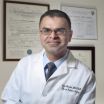Uncovering the neurobiological basis of general anesthesia
Review article delineates similarities with and differences from sleep and coma
2010-12-30
(Press-News.org) The use of general anesthesia is a routine part of surgical operations at hospitals and medical facilities around the world, but the precise biological mechanisms that underlie anesthetic drugs' effects on the brain and the body are only beginning to be understood. A review article in the December 30 New England Journal of Medicine brings together for the first time information from a range of disciplines, including neuroscience and sleep medicine, to lay the groundwork for more comprehensive investigations of processes underlying general anesthesia.
"A key point of this article is to lay out a conceptual framework for
understanding general anesthesia by discussing its relation to sleep and coma,
something that has not been done in this way before," says Emery Brown, MD, PhD,
of the Massachusetts General Hospital (MGH) Department of Anesthesia, Critical
Care and Pain Medicine, lead author of the NEJM paper. "We started by stating
the specific physiological states that comprise general anesthesia –
unconsciousness, amnesia, lack of pain perception and lack of movement while
stable cardiovascular, respiratory and thermoregulatory systems are maintained –
another thing that has never been agreed upon in the literature; and then we
looked at how it is similar to and different from the states that are most
similar – sleep and coma."
After laying out their definition, Brown and his co-authors – Ralph Lydic, PhD, a sleep expert from the University of Michigan, and Nicholas Schiff, MD, an expert in coma from Weill Cornell Medical College – compare the physical signs and electroencephalogram (EEG) patterns of general anesthesia to those of sleep. While it is common to describe general anesthesia as going to sleep, there actually are significant differences between the states, with only the deepest stages of sleep being similar to the lightest phases of anesthesia induced by some types of agents.
While natural sleep normally cycles through a predictable series of phases,
general anesthesia involves the patient being taken to and maintained at the
phase most appropriate for the procedure, and the phases of general anesthesia
at which surgery is performed are most similar to states of coma. "People have
hesitated to compare general anesthesia to coma because the term sounds so
harsh, but it really has to be that profound or how could you operate on
someone?" Brown explains. "The key difference is this is a coma that is
controlled by the anesthesiologist and from which patients will quickly and
safely recover."
In detailing how different anesthetic agents act on different brain circuits, the authors point out some apparently contradictory information – some drugs like ketamine actually activate rather than suppress neural activity, an action that can cause hallucinations at lower doses. Ketamine blocks receptors for the excitatory transmitter glutamate, but since it has a preference for receptors on certain inhibitory neurons, it actually stimulates activity when it blocks those inhibitors. This excess brain activity generates unconsciousness through a process similar to what happens when disorganized data travels through an electronic communication line and blocks any coherent signal. A similar mechanism underlies seizure-induced unconsciousness.
Brown also notes that recent reports suggest an unexpected use for ketamine – to treat depression. Very low doses of the drug have rapidly reduced symptoms in chronically depressed patients who had not responded to traditional antidepressants. Ketamine is currently being studied to help bridge the first days after a patient begins a new antidepressant – a time when many may be at risk of suicide – and the drug's activating effects may be akin to those of electroconvulsive therapy.
Another unusual situation the authors describe is the case of a brain-injured
patient in a minimally conscious state who actually recovered some functions
through administration of the sleep-inducing drug zolpidem (Ambien). That
patient's case, analyzed previously by Schiff, mirrors a common occurrence
called paradoxical excitation, in which patients in the first stage of general
anesthesia may move around or vocalize. The authors describe how zolpidem's
suppression of the activity of a brain structure called the globus pallidus –
which usually inhibits the thalamus – stimulates activity in the thalamus, which
is a key neural control center. They hypothesize that a similar mechanism may
underlie paradoxical excitation.
"Anesthesiologists know how to safely maintain their patients in the states of
general anesthesia, but most are not familiar with the neural circuit mechanisms
that allow them to carry out their life-sustaining work," Brown says. "The
information we are presenting in this article – which includes new diagrams and
tables that don't appear in any anesthesiology textbook – is essential to our
ability to further understanding of general anesthesia, and this is the first of
several major reports that we anticipate publishing in the coming year."
Schiff adds, "We think this is, conceptually, a very fresh look at phenomena we and others have noticed and studied in sleep, coma and use of general anesthesia. By reframing these phenomena in the context of common circuit mechanisms, we can make each of these states understandable and predictable."
INFORMATION:
Brown is the Warren M. Zapol Professor of Anaesthesia at Harvard Medical School
and also professor in the Department of Brain and Cognitive Sciences at
Massachusetts Institute of Technology and in the Harvard-MIT Division of Health
Sciences and Technology. Support for the authors’ report includes a National
Institutes of Health Director’s Pioneer Award to Brown, other NIH grants, and
support from the MGH and University of Michigan Departments of Anesthesia and
the James S. McDonnell Foundation.
Celebrating the 200th anniversary of its founding in 1811, Massachusetts General Hospital is the original and largest teaching hospital of Harvard Medical School. The MGH conducts the largest hospital-based research program in the United States, with an annual research budget of more than $600 million and major research centers in AIDS, cardiovascular research, cancer, computational and integrative biology, cutaneous biology, human genetics, medical imaging, neurodegenerative disorders, regenerative medicine, systems biology, transplantation biology and photomedicine.
END
ELSE PRESS RELEASES FROM THIS DATE:
2010-12-30
While regulations have been put in place to restrict the work hours of doctors in training, no such regulations exist for fully trained physicians. An editorial in this week's New England Journal of Medicine argues that sleep-deprived physicians should not be permitted to proceed with an elective surgery without a patient's informed, written consent.
According to the authors, "This approach would represent a fundamental shift in the responsibility patients are asked to assume in making decisions about their own care and might prove burdensome to patients and physicians ...
2010-12-30
SEATTLE—Many people in the U.S. have multiple common chronic diseases such as diabetes and heart disease, which complicates health care needs. When depression coexists with diabetes, heart disease, or both, health outcomes are often less favorable.
In a randomized controlled trial, testing a primary care intervention called TEAMcare, nurses worked with patients and health teams to manage care for depression and physical disease together, using evidence-based guidelines. The result for patients: less depression, and better control of blood sugar, blood pressure and cholesterol ...
2010-12-30
Investigators at the National Institutes of Health have observed that the survival rate of people with a rare immunodeficiency disease called chronic granulomatous disease (CGD) is greatly improved when even very low levels of microbe-killing molecules are present. Because production of these molecules, made by an enzyme called NADPH oxidase, can be predicted from genetic analysis, a patient's risk for severe CGD could be assessed very early in life, allowing for more personalized treatment, say the researchers.
The study was conducted at the NIH Clinical Center and ...
2010-12-30
Chapel Hill, NC – In a new paper published this week in the Proceedings of the National Academy of Sciences, Aziz Sancar, MD, PhD, the Sarah Graham Kenan Professor of Biochemistry and Biophysics in the UNC School of Medicine, and his colleagues have taken an important step in understanding the underlying molecular signals that influence a broad array of biological processes ranging from the sleep-wake cycle to cancer growth and development.
Scientists who work in this field, known as chronobiology, have identified the genes that direct circadian rhythms in people, mice, ...
2010-12-30
GETTYSBURG, PA – Peach producers have traditionally relied heavily on hand thinning, a necessary but costly and labor-intensive field practice. Impacted by increasing labor costs and a limited workforce, peach and other stone fruit growers are turning to mechanical methods such as string thinners to minimize the need for hand thinning. A new ''hybrid'' string thinner prototype showed promising results when it was evaluated in four U.S. growing regions; the trials resulted in significant labor savings and increased peach size.
According to Pennsylvania State University's ...
2010-12-30
BUDAPEST, HUNGARY – Apricots are important to Turkey, the country where more apricot crops are grown and exported than anywhere in the world. Looking to unlock the mystery of apricots' origins and increase crop production, scientists are studying the genetic relationship between apricot varieties. New research from a team of Hungarian and Turkish scientists has confirmed the genetic link between Turkish and Hungarian apricot cultivars, yielding information that provides valuable data for apricot growers and breeders.
It is widely believed that apricots originated in China, ...
2010-12-30
WEST LAFAYETTE, IN – Traditional turfgrass management programs rely heavily on the use of synthetic pesticides and fertilizers. In response to increased public scrutiny and legislation, organic and biological alternatives are becoming more accepted, but research indicates that these alternatives have not been widely adopted by either homeowners or the lawn care industry. Results of a new study that compared common but disparate turfgrass management approaches may help lawn care professionals to evaluate, market, and implement alternative management programs.
Purdue University ...
2010-12-30
NORWAY – Could a plant "intervention" improve the well-being of patients in a difficult rehab process? Scientists from the Norwegian University of Life Sciences and Sweden's Uppsala University investigated this question in a recent study of 436 coronary and pulmonary patients at a Norwegian rehabilitation center. The results were published in HortScience. Ruth Kjærsti Raanaas, Grete Grindal Patil, and Terry Hartig studied the effects of an indoor plant intervention during a 2-year study conducted at the Røros Rehabilitation Center. The experiment showed that patients' overall ...
2010-12-30
Children who live in areas with fewer pediatricians are more likely to suffer life-threatening ruptures of the appendix than those in areas with more pediatricians, even when accounting for other factors such as the number of hospitals, imaging technology, insurance coverage and the number of surgeons in an area, according to a study from the Johns Hopkins Children's Center.
The study's findings, based on an analysis of nearly 250,000 hospital records of children with appendicitis, are published online in the December issue of JAMA-Archives of Surgery.
"Our analysis ...
2010-12-30
A team of Johns Hopkins Children's Center researchers has discovered that a protein involved in cystic fibrosis (CF) also regulates inflammation and cell death in emphysema and may be responsible for other chronic lung diseases.
The findings, published online in the December issue of The Journal of Immunology, pave the way toward new treatments to prevent lung damage caused by infections or cigarette smoke in emphysema.
The protein, called CFTR (cystic fibrosis transmembrane conductance regulator), is already well known for its role in transporting chloride in and ...
LAST 30 PRESS RELEASES:
[Press-News.org] Uncovering the neurobiological basis of general anesthesia
Review article delineates similarities with and differences from sleep and coma





